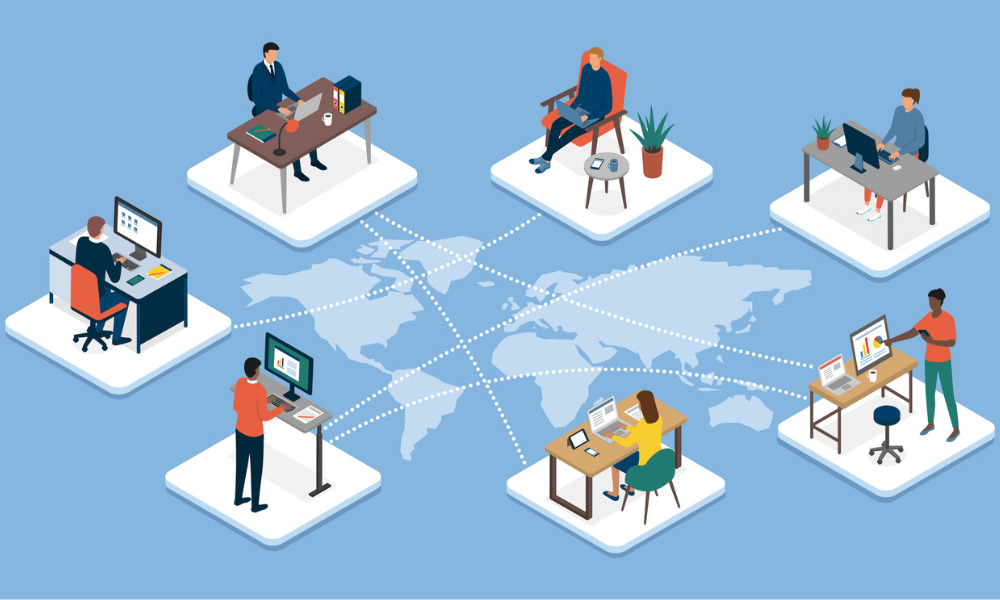Global teams today face a unique challenge and that is not knowing how to collaborate effectively when team members are scattered across multiple time zones. Traditionally, companies relied on synchronous communication methods, such as meetings and live discussions, to bridge this gap. However, the rise of asynchronous work is reshaping how distributed teams operate, fostering flexibility, inclusivity, and enhanced productivity.
What is Asynchronous Work?
Unlike synchronous work, where collaboration happens in real time, asynchronous work allows team members to communicate and contribute at different times. Think of it as a more flexible approach where tasks, updates, and decisions don’t require everyone to be available simultaneously. Team members send messages, share progress, and provide feedback on their own schedules, using tools and systems designed to keep everything running smoothly.
The Benefits of Asynchronous Work for Global Teams
1. Flexibility Across Time Zones
One of the biggest challenges for global teams is coordinating schedules for meetings or discussions. With asynchronous work, time zones cease to be a major hurdle. Team members in Tokyo can submit their work by the end of their day, and colleagues in London can pick it up the next morning.
This flexibility leads to better work-life balance. Employees are no longer pressured to attend late-night or early-morning calls, which often disrupt personal routines.
2. Increased Inclusivity and Accessibility
Synchronous communication often favors outspoken individuals who are comfortable voicing their thoughts in real-time settings. On the other hand, asynchronous workflows give everyone an equal opportunity to participate. Team members can review information, consider responses, and contribute thoughtfully without the pressure of immediate dialogue.
In addition, asynchronous communication accommodates employees with disabilities or those who may have slower internet connections. For example, providing written updates or recorded videos ensures every team member has access to the same information, regardless of their circumstances.
3. Improved Productivity and Focus
When meetings dominate the calendar, team members often find themselves racing to complete tasks between interruptions. Switching to an asynchronous model minimizes the need for constant meetings, allowing employees to dedicate uninterrupted time to deep work.
Tools like project management platforms capture updates and feedback in one place, so employees can focus on delivering their best work without being sidetracked by unnecessary meetings or live chats.

Tools and Strategies Powering the Asynchronous Movement
The success of asynchronous work relies largely on the right tools and practices.
Here are a few examples:
Document Collaboration Tools
Platforms like Google Docs or Notion enable team members to contribute, edit, and review documents at their own pace. These tools also maintain detailed revision histories for full transparency.
Project Management Software
Trello, Monday.com, and Asana are excellent for tracking project progress. Team members can update tasks, share status notes, and tag colleagues without needing a live check-in.
Video Messaging Solutions
Tools like Loom allow users to record video updates instead of scheduling a meeting. A project manager can summarize progress or explain the next steps visually, which team members can watch when it suits them.
Centralized Communication Platforms
Slack and Microsoft Teams provide structured channels where teams can communicate asynchronously. These platforms also allow users to set do-not-disturb hours to minimize non-essential notifications.
Conclusion
The shift to asynchronous work marks a turning point in how businesses approach global collaboration. By prioritizing flexibility, inclusivity, and productivity, companies empower their teams to work smarter while fostering healthier work environments.
With the right tools and strategies in place, asynchronous work has the potential to redefine teamwork across cultures, time zones, and industries. Whether you have a distributed team or are expanding globally, the asynchronous model offers an exciting path to sustainable collaboration.


